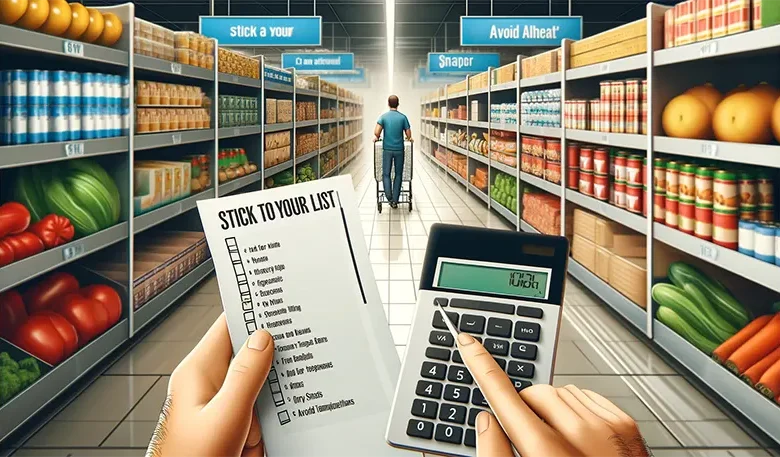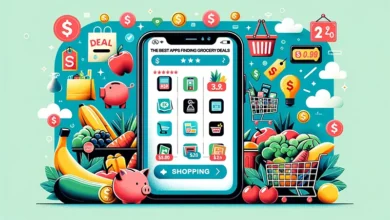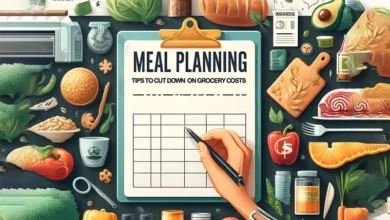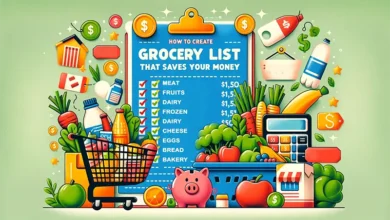How to Avoid Impulse Buys at the Grocery Store

Introduction
Impulse buying is a phenomenon that is rampant with most shoppers, and going by the grocery store is the usual way temptation is found on every shelf, meaning it is very easy to be led into buying a given item. The only hitch here is that the unplanned purchase can easily throw your budget off, meaning you spend money that you never intended to spend. This is money you could have saved for some big-ticket purchase or some other form of investment. Of course, the impulse buying habit is a big challenge, especially if it is getting in the way of healthier eating habits. In this guide, we will help you work some practical steps to helping you steer clear of impulse buying at the grocery store.
Section 1: Definition and Examples of Impulse Buying
Definition of Impulse Buying:
This is a purchase that is unplanned and is due to a trigger of emotion or temptation.
Examples:
From a bar of chocolate lying near the cash register to promotional items placed near the doors at departmental stores, impulse buys abound. This could range from candy at the checkout counter to promotional items placed in high-traffic areas. Normally, you’ll pick up and make payment for items without concern for your budget or general well-being.
Psychological Triggers:
Highlighted here are psychological triggers that impact consumers while doing their shopping. Grocery stores play with factors involving stress, being hungry, and the temptation of sales and discounts to lead buying decisions. Stores use techniques such as color stimulation, inviting odors, and strategic product placement to trigger purchases that are unplanned.
Section 2: Pre-Shop Preparation
Making a Shopping List:
Probably the single most effective way to fight impulse buying involves preparing a shopping list that provides appropriate details before going to the grocery. A well-thought-out list helps a shopper to keep focused on items they really need and serves as a reminder of things to avoid. Consider your meal plans for the week, take inventory of the pantry and refrigerator for items you already have on hand, shop only off your list.
Setting a Budget:
One of the most important steps to ensure that people avoid impulse buying is developing a realistic budget for grocery shopping. Have in mind the amount of money that one is supposed to spend buying groceries depending on the amount of income at their disposal. Budgeting apps and other tools can be useful for tracking expenditure and ensuring one stays within their limits.
Timing Your Shopping:
The timing of your trip to the grocery store can really make a difference, whether or not you can bring yourself to avoid impulse buys. Shop when you’re not hungry and not emotionally distressed; these states can break down self-control and entice you to make spur-of-the-moment purchases. On the other hand, maximize buying groceries after meals and at a time when you are very calm and focused.
Section 3: Strategic Shopping Practices
Navigating the Store Layout:
Grocery stores are designed to make you shop for items impulsively. Learning about the general store layout and shopping around it is an ideal way to save yourself from this. Start your shopping from the store’s periphery as this is where fresh vegetables, animal products, and dairy products are usually stocked. After you are done with the periphery, you can then move into the inner store’s aisles which stock packaged and processed foodstuffs, and this is where you are more likely to impulsively shop.
Knowing the Tricks of Marketers:
There are several marketing gimmicks that grocery stores implement to pull in customers, and eventually customers make impulse purchases/lure. Be aware of product placement also, like putting the most enticing products at eye level, and avoid impulse purchases brought about by this marketing gimmick. Multi-buy and end-cap deals are other attractive marketing techniques. Ensure you assess all these with a critical eye to help establish whether you need these items in your budget.
Section 4: Mindful Shopping Techniques
Mindful Shopping:
Practicing mindfulness when shopping will help you maintain the present moment and be in good control of the process of buying. Pause before you add it to your cart, and ask yourself if you really want it. Ask some questions: Am I really in need of that? Would I use this product?
Deliberately Put Obstacles in Your Way:
When you have an impulse to buy something, try putting an obstacle between you and selecting that item. Take an extra lap or wait a few minutes. That short period of time will allow you to get in control again and think about the purchase more rationally.
Technology:
Apps and tools are available to be used with retailers, including budgeting tools to look at how much you are spending in real time, grocery list tools to make sure you are buying what you planned, and even ones that offer barcode scanning for pricing comparisons to keep you from doing impulse buys.
Section 5: Long-Term Strategies to Reduce Impulse Buying
Habitual Changes:
Make long-term lifestyle changes supportive of no longer giving in to the habit of impulse buying. These can include making habits that naturally reduce such temptations, including meal planning, batch cooking, and not going into a store if you are feeling vulnerable towards making such unplanned purchases.
Better Financial Literacy:
Better financial literacy is also key in impulse buying. The knowledge of how detrimental unplanned purchasing is toward your end goals will often motivate better self-control and more thoughtful choices.
Community Support:
Involving yourself in a community that will be a source of support and will hold you accountable may enable you to conquer impulse buying. For example, there are numerous online forums, workshops, or even friends with similar goals to whom you can turn for motivation and inspiration.
Conclusion:
Impulse buying at the grocery store is one of the enemies of good financial management and good health. Knowledge of the psychological drivers, what to do before going shopping, smart shopping practices, mindfulness, and long-term lifestyle change are what you will be armed with in order to have mastery over your impulses while shopping. Mind, small steps toward the defeat of impulse buying count as small parts toward your financial wellness and a more mindful approach to consumption.
FAQs
Are you ready to take the first step towards avoiding impulse buys at the grocery store?
Start by implementing just one strategy from this article on your next shopping trip. Whether it’s creating a detailed shopping list, setting a budget, or simply being mindful as you walk through the aisles, a conscious attempt to change your behavior could really make a sizable difference. To keep that motivation up and get more tips on budgeting and being mindful about what and when you spend, consider subscribing to our newsletter. Let’s be on our way to financial freedom and intentional grocery shopping.
What are some of the most common examples of impulse buys when grocery shopping?
Some of the most common grocery store impulse purchases include placing candies and snacks in strategic locations near the point of sale, promotional items on the end-caps or in dead-space areas, and multi-buy or discounted offers, although the items are not on your list initially.
What are ways in which grocery stores can encourage impulse buying?
Grocery stores achieve the encouragement of impulse buying through things like effective product placement, attractive display areas, good smells, and great multi-buy deals. They can also use psychological triggers like hunger, stress, and the desire for instant gratification.
Why is it important not to impulse buy at the grocery store?
It is important for you to realize the reasons that you must not impulse buy grocery items—how it is simply a way to shot healthier eating routines and maintain a budget. Impulse buys can throw a budget off course and result in the accumulation of items that are either unhealthy or useless.
What are some pre-shop preparation strategies to help you avoid impulse buying?
Some of the pre-shop preparation strategies that would help avoid impulse buying include prepared shopping lists, realistic budget determination, and grocery shopping when you’re not hungry or upset.
How can mindfulness techniques help you to shop at the grocery store?
Employing mindfulness in shopping can help you strengthen the steps in empowering presence and self-control in the decisions of purchase that you make. Techniques might include stopping and pausing before placing an item in your cart, use of delay tactics or budgeting apps, and enhancing a sense of mindful shopping.
What are some long-term strategies for reducing impulsive buying at the grocery store?
Long-term plans to break this habit can be developed by fostering the meal planning and batch-cooking habit, improving financial literacy for a better understanding of the consequences of unplanned buying, and through community support with people of a like mind.




